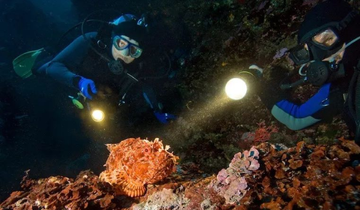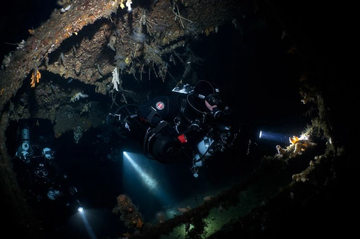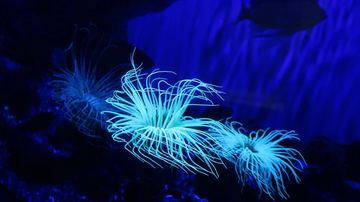Night diving is a magical experience that transforms the familiar underwater world into a mysterious, alien landscape. As the sun sets, a new cast of creatures emerges, and corals reveal brilliant colors that are muted during the day. But this adventure hinges on one crucial piece of equipment: your dive light.
Mastering your dive light isn't just about seeing; it's about communicating, navigating, and observing in a completely new way. This night diving guide is packed with essential night diving tips to help you use your light effectively, safely, and respectfully.

Gearing Up: Your Primary and Backup Lights
Before you even get wet, your gear setup is critical. A successful night dive requires a two-light system.
Primary Dive Light: This is your main source of illumination. Look for a light with a good balance of lumen output (500+ is a great start) and burn time that exceeds your planned dive duration.
Backup Dive Light: This is non-negotiable. Your backup light should be small, reliable, and easily accessible. It's your lifeline if your primary light fails. It can be a smaller version of your main light or a dedicated, simple backup torch. Clip it to your BCD with a lanyard.

Pro Tip: Always carry a third, even smaller chemical light stick or strobe to mark your position on the surface and help your boat captain track you.
The Pre-Dive Check: Don't Skip the Light Test
A final check on the dive boat can prevent a dive from ending before it begins. Gather with your buddy and follow this checklist:
Function Test: Turn on both your primary and backup lights. Check that all modes (high, low, strobe) work correctly.
Beam Check: Look at the beam on a dark surface. Is it bright and consistent? Are there any flickers?

Seal Inspection: Quickly check the O-ring on both lights for any obvious debris or damage.
Buddy Check: Confirm your buddy's lights are also working. Shine your lights on each other's tanks to confirm beam color and intensity – this helps with later identification.
Underwater Techniques: Painting with Light
Once you're in the water, it's time to put your dive light skills into practice.
Use a Wide Beam to Scan Your Environment
The wide, or flood, beam of your light is your navigational tool. Use it to:
Illuminate a broad path in front of you, helping you avoid silty bottoms or obstacles.

Get a general sense of the topography and stay oriented with your dive group.
Find your buddy and keep track of their position.
Think of your wide beam as the headlights of your car—it lights up the road ahead for safe travel.
Switch to a Narrow Beam to Observe Details
The spot, or narrow, beam is your microscope. Use it to:
Focus on small, fascinating critters like nudibranchs, shrimps, or a sleeping parrotfish without flooding the area with light and potentially startling them.

Look into crevices and under ledges where nocturnal life hides.
Signal your buddy to "look here!" by pinpointing a specific subject.
Master Buddy Communication with Your Light
Your light is your primary means of communication at night. Establish a set of signals with your buddy beforehand:
Getting Attention: Gently wave your light in your buddy's peripheral vision.

"Look at Me": Shine the light on your own chest or hand so your buddy can see you clearly.
"Are You OK?": Make a slow, circular motion with your beam.
"Something's Wrong": Rapidly wave your light back and forth.
Important: Never shine your light directly into another diver's eyes. You will ruin their night vision and can be disorienting and dangerous.
The #1 Mistake to Avoid: Combatting Visual Tunnel Effect
One of the most common challenges for new night divers is visual tunnel effect. This is the tendency to focus exclusively on the small circle of light from your torch and ignore the surrounding darkness.

Why is it a problem?
You miss the big picture, like a large manta ray gliding just outside your beam.
It can lead to disorientation and separation from your group.
It increases anxiety as the world feels smaller and more confined.
How to Fight Visual Tunnel Effect:
Look Away from the Beam: Periodically, turn your primary light off for a second (ensure your buddy is close and you are in a safe position). Let your eyes adjust to the ambient light. You'll be amazed at how much you can see—bioluminescence, moonlit silhouettes, and the lights of other divers.
Use Your Peripheral Vision: Instead of staring straight down the beam, consciously try to notice movement and shapes at the edges of your light.
Scan Widely and Often: Make a habit of slowly sweeping your wide beam across the seascape, then using your narrow beam to zoom in on points of interest.
Conclusion
Night diving is an unforgettable adventure that rewards preparation and skill. By choosing the right primary and backup lights, performing




